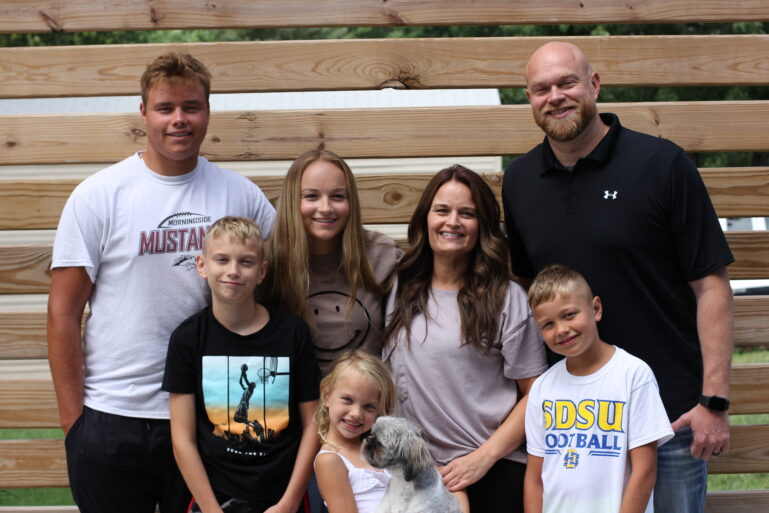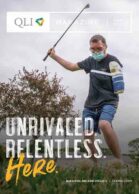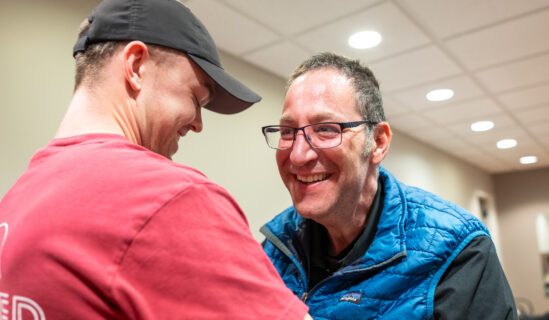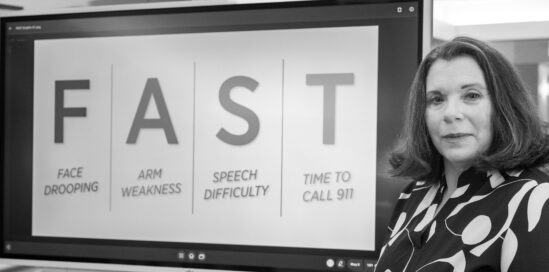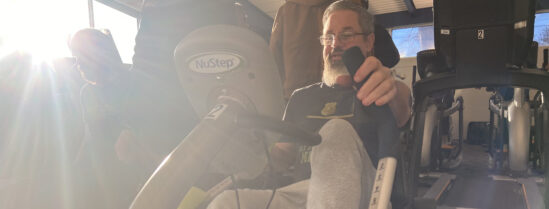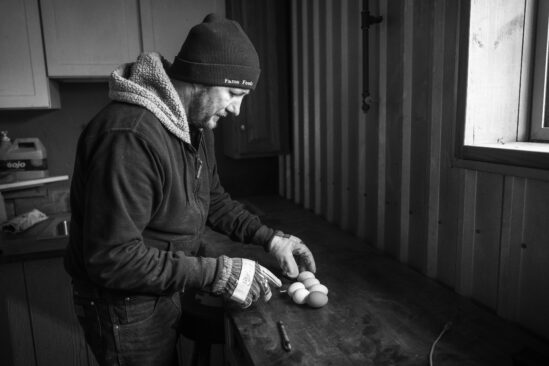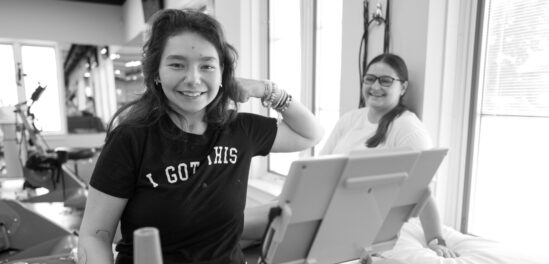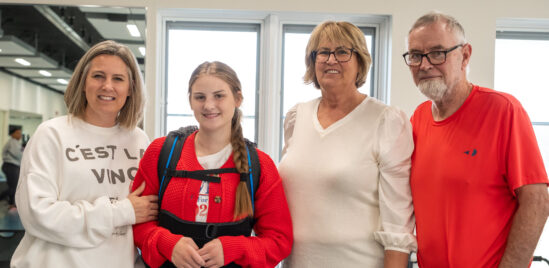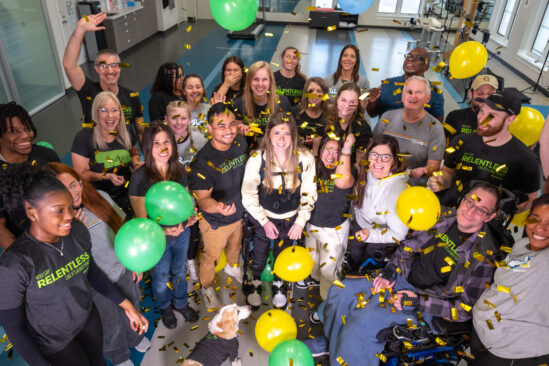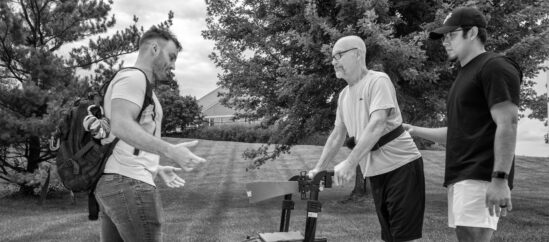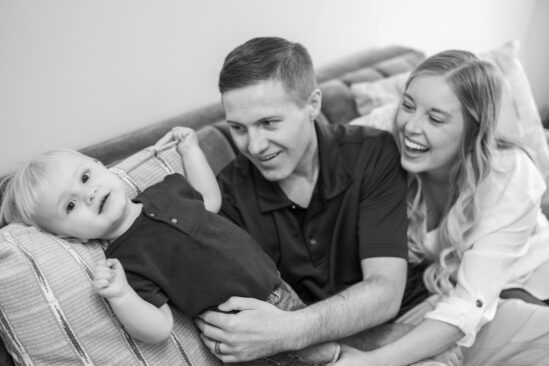Above all else, Pat Korth is a husband and father of five. His evenings and weekends are filled with going to his kids’ practices, games, and social events. He’s just as comfortable sitting in the stands at a high school basketball game as he is in the family home, reading a good book.
“He’s smart in a curious sort of way,” says his wife, Korah. “If there’s something he doesn’t know or fully understand, he’ll learn all there is to know about,” a trait that serves him well in his occupation. By day, Korth interviews convicted criminals for the US Federal Probation system. He’s a born communicator with an investigative mind.
His was a life fulfilled.
…
It began with a cough. “It got bad very quickly,” Pat recalls. “At first, I thought I’d torn my retina.” His family kept it front of mind but settled down for the night.
“I woke up in the middle of the night,” says Korah. “I looked over to Pat—it was as if his body was trying to wake me up.” Pat’s cough had turned into an involuntary wheezing and gasping, his body halfway off the bed as if in motion to find help. “I called 911,” says Korah, “and that’s when I saw his face droop.”
“I knew then that he had a stroke.”
…
The following few days flew by for Pat. It was immediately determined that Pat’s stroke was severe enough to require air transport to the University of Nebraska Medical Center (UNMC).
“Throughout all of this,” says Pat, “I didn’t understand that I had a stroke. And it wasn’t until I got to UNMC that I realized what had happened was something very serious.” It would still be some time before Pat would grasp the true gravity of the situation. Upon arriving, it was determined that Pat had both a blood clot—which caused the stroke—and a tear in his carotid artery. A three-hour surgery followed, with a metal stent placed in the artery and the clot removed.
“It wasn’t until I saw paperwork stating I had a stroke that I understood. That information came over me like a wave. And I just lost it.”
Pat was then transferred to Immanuel Rehabilitation Institute (IRI) for acute rehabilitation. His physical recovery was speedy, improving to an independent state in a short amount of time. His physical and occupational therapy sessions decreased accordingly. But still, the Korths knew they still had more to address.
“For some who may see Pat,” says Korah, “they ask him about the stroke, but then assume he’s gotten better, as he doesn’t exhibit any outward signs.” For Pat, the difficulties he faced surrounded his speech, something only perceptible when others engaged him in conversation.
The doctors at Immanuel assessed him and Pat was given a diagnosis of apraxia. This speech impairment meant that syllable sequencing was difficult—Pat knew the word he wanted to say, but couldn’t pronounce the word in the correct sequence. The news clicked—immediately articulating that change and establishing a goal towards recovery.
For a person whose livelihood depended upon an ability to communicate complex ideas effectively, Pat was eager to face the hard road ahead to again regain that ability.
…
“Perseverance, tenacity: he’s got them in spades.” QLI’s Director of Research and speech-language pathologist, Dr. Karen Hux reflects on her time with Pat. “He had a lot of things going for him—good cognitive reserve and strength of mind—and a lot of community support.”
Pat was ultimately discharged home to Ponca, Nebraska. At that time, Pat could only speak one word at a time. Out-patient, in-person rehabilitation wasn’t a viable option due to insurance and geographic distance from providers, but telerehabilitation through Kintinu at QLI was.
Pat began sessions with Dr. Hux. “We knew from early on that reading was one of Pat’s great strengths,” says Dr. Hux. “I found that if Pat would read passages, word finding came easier.” Pat worked his way up in reading level from an early elementary to early high school reading level, focusing not on fluency (which he had retained), but on a gradual increase in word complexity.
Perhaps one of the most elusive questions when it comes to rehabilitation is—“will I be able to work again?” Given the intensity associated with Pat’s profession, there was a reason for concern as to whether or not the effects of his stroke would prevent a return to his position.
“It gave us something to fight for,” says Korah, “and to make the most of the recovery that we could.”
And fight they did. “We looked at many possibilities,” says Dr. Hux. “And, while Pat ultimately did not return to his previous role, he was able to find purpose and reshape his identity outside of that.”
Pat’s time in telerehab was paid for by a grant from the American Heart Association. The grant aims to serve more individuals who live 30-plus miles outside of a pilot city area (the city, in this case, Omaha). With a limited number of sessions covered by the grant, the Kintinu team worked with the Korth family to assess the frequency at which Pat would benefit most from sessions with clinicians. Pat would put in the dedication and work at home to improve tenfold for each new check-in with Kintinu, which in late 2022, graduated to weekly in nature.
“Pat was progressing at a fantastic speed,” says Steve Kerschke, Director of Kintinu. “We were confident from the start that this method would work best for him, and he greatly excelled.”
“I know that I may not get back to 100% of where I was before my stroke,” says Pat. “I won’t be able to do some things as fast as before, but I know that there are tools that can aid me and methods that I can work through that suit a productive pace.”
Pat is fortunate to have strong family support behind him. “There may be some times when I can’t find the words to speak—but I know they are comfortable speaking for me if I ask.”
And of course, there is the future to contend with. “I want the motivation that I have now to stay strong so that I can continue to work on my speech. I also want to get to a place where I can help others like me—to talk to them and help them along in any way I can.”
